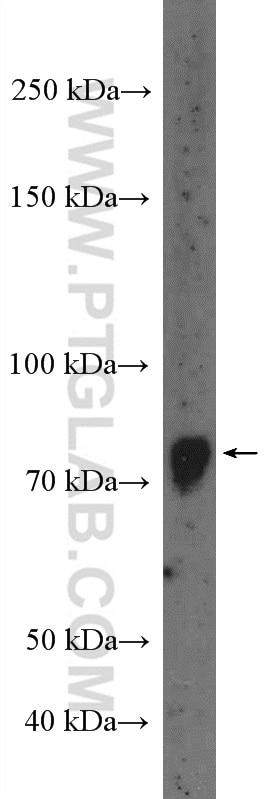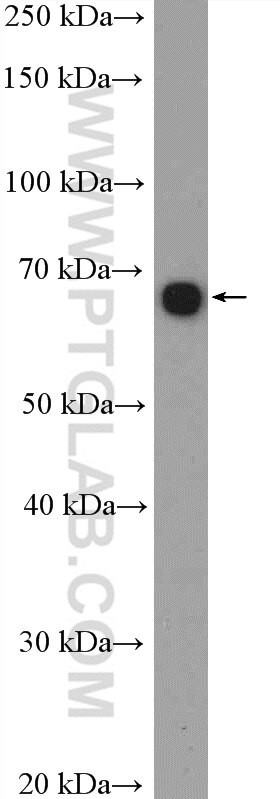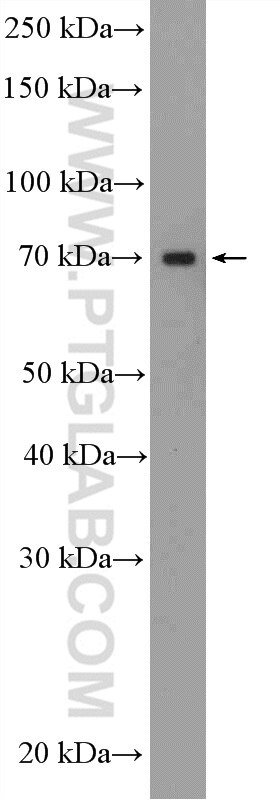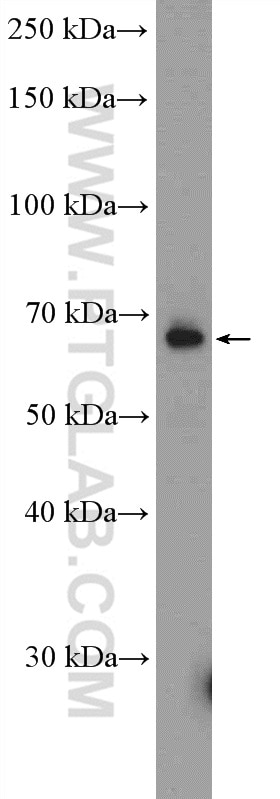GLIS3 Polyclonal antibody
GLIS3 Polyclonal Antibody for WB, ELISA
Host / Isotype
Rabbit / IgG
Reactivity
human, mouse, rat
Applications
WB, ELISA
Conjugate
Unconjugated
Cat no : 12678-1-AP
Synonyms
Validation Data Gallery
Tested Applications
| Positive WB detected in | mouse kidney tissue, A549 cells, BxPC-3 cells, HepG2 cells |
Recommended dilution
| Application | Dilution |
|---|---|
| Western Blot (WB) | WB : 1:200-1:1000 |
| It is recommended that this reagent should be titrated in each testing system to obtain optimal results. | |
| Sample-dependent, Check data in validation data gallery. | |
Published Applications
| WB | See 1 publications below |
Product Information
12678-1-AP targets GLIS3 in WB, ELISA applications and shows reactivity with human, mouse, rat samples.
| Tested Reactivity | human, mouse, rat |
| Cited Reactivity | mouse |
| Host / Isotype | Rabbit / IgG |
| Class | Polyclonal |
| Type | Antibody |
| Immunogen | GLIS3 fusion protein Ag3366 |
| Full Name | GLIS family zinc finger 3 |
| Calculated Molecular Weight | 775 aa, 84 kDa |
| Observed Molecular Weight | 70-85 kDa |
| GenBank Accession Number | BC033899 |
| Gene Symbol | GLIS3 |
| Gene ID (NCBI) | 169792 |
| RRID | AB_2877873 |
| Conjugate | Unconjugated |
| Form | Liquid |
| Purification Method | Antigen affinity purification |
| Storage Buffer | PBS with 0.02% sodium azide and 50% glycerol pH 7.3. |
| Storage Conditions | Store at -20°C. Stable for one year after shipment. Aliquoting is unnecessary for -20oC storage. 20ul sizes contain 0.1% BSA. |
Background Information
Zinc-finger proteins contain DNA-binding domains and have a wide variety of functions, most of which encompass some form of transcriptional activation or repression. GLIS3 (gLIS family zinc finger 3), also known as ZNF515 that localizes to the nucleus and contains five C2H2-type zinc fingers. Expressed in a variety of tissues, including kidney, brain, liver, lung, ovary, pancreas, thymus and skeletal muscle, GLIS3 functions as both an activator and a suppressor of transcription, specifically binding the consensus sequence 5'-GACCACCCAC-3' through its C2H2-type zinc fingers. Defects in the gene encoding GLIS3 are a cause of NDH syndrome; a neonatal diabetes that is characterized by congenital hypothyroidism, congenital glaucoma, hepatic fibrosis and polycystic kidneys. There are various isoform of GLIS3 and molecular weight of one isoform is 70 kDa.
Protocols
| Product Specific Protocols | |
|---|---|
| WB protocol for GLIS3 antibody 12678-1-AP | Download protocol |
| Standard Protocols | |
|---|---|
| Click here to view our Standard Protocols |
Publications
| Species | Application | Title |
|---|---|---|
Physiol Genomics Polycystin-2-dependent transcriptome reveals early response of autosomal dominant polycystic kidney disease |





